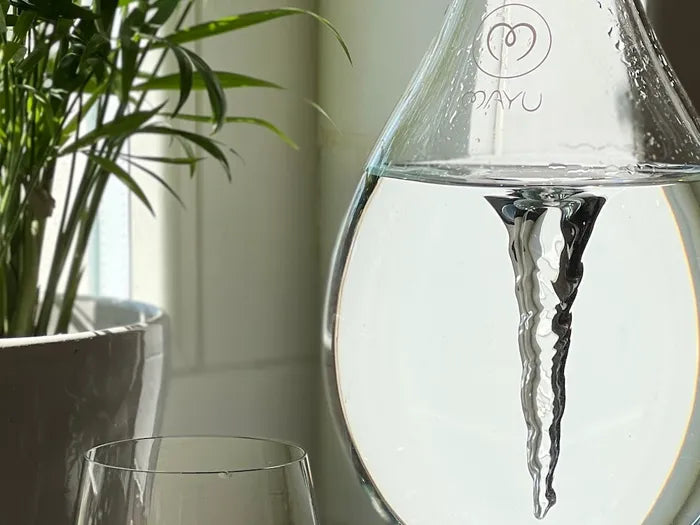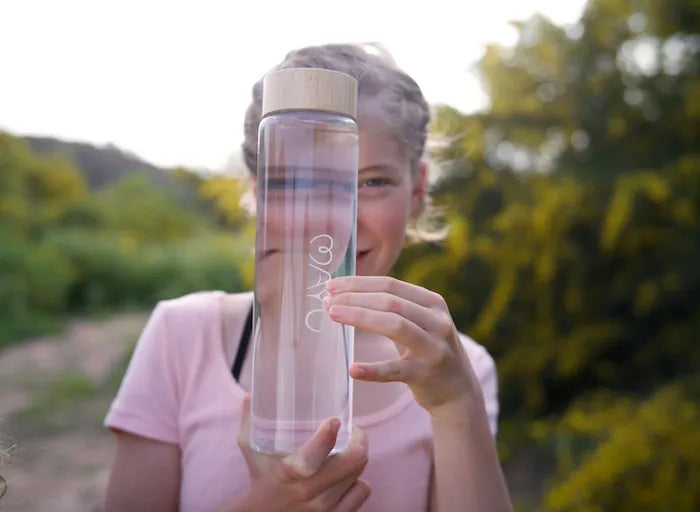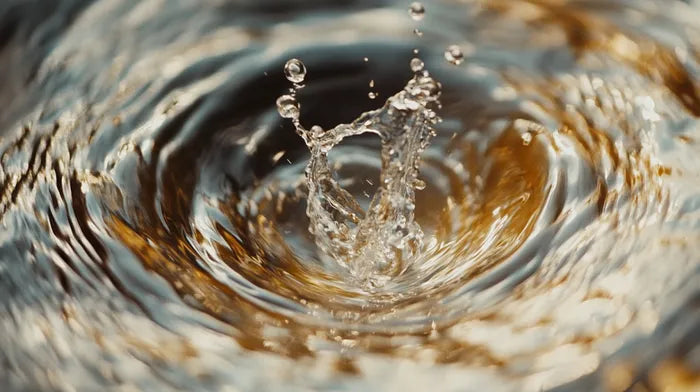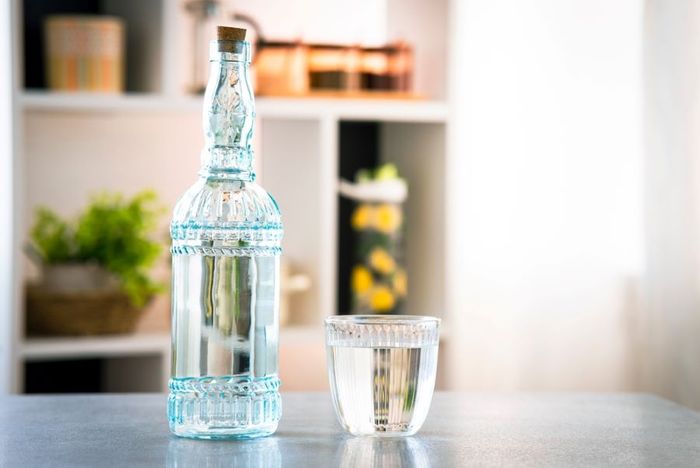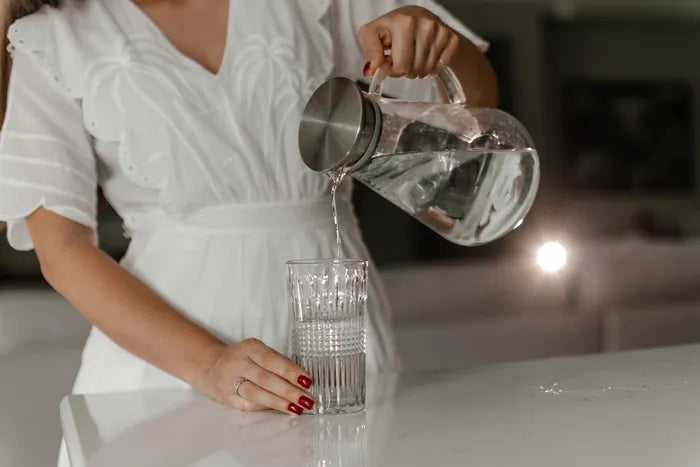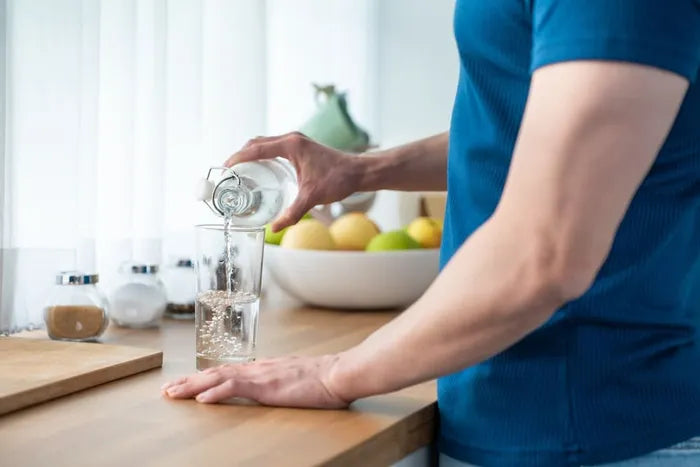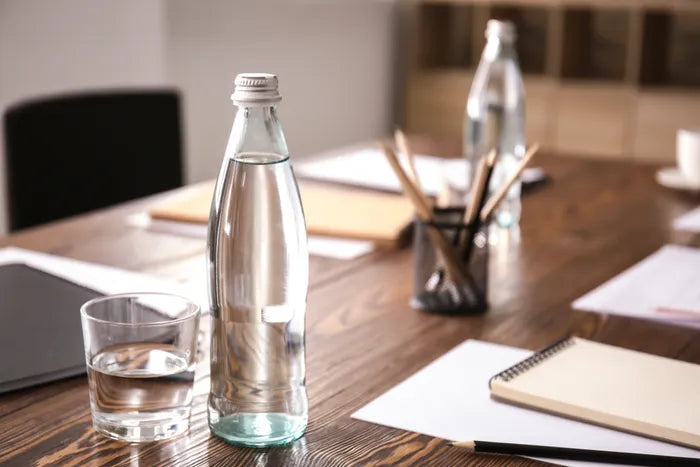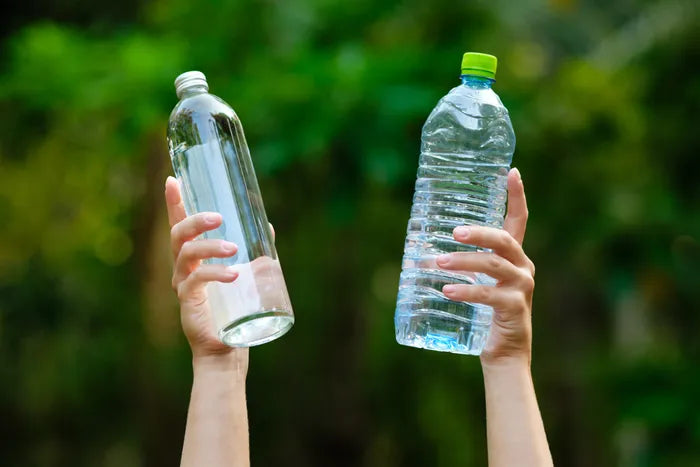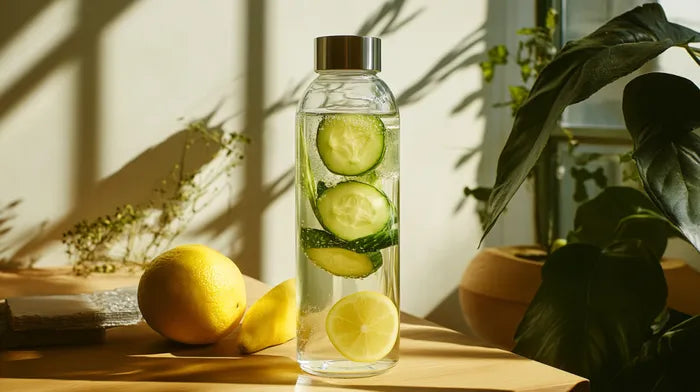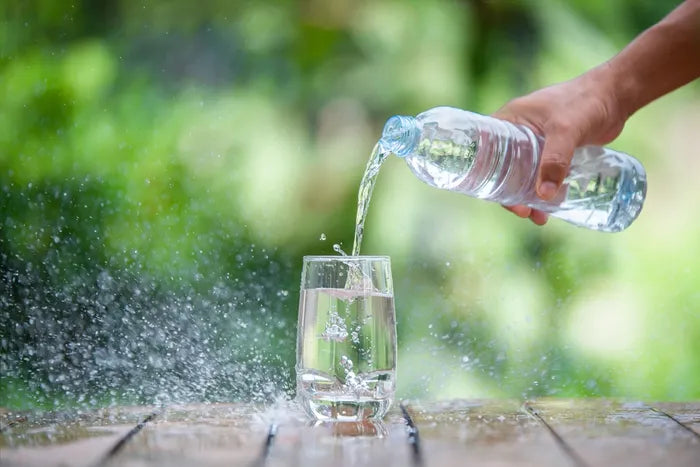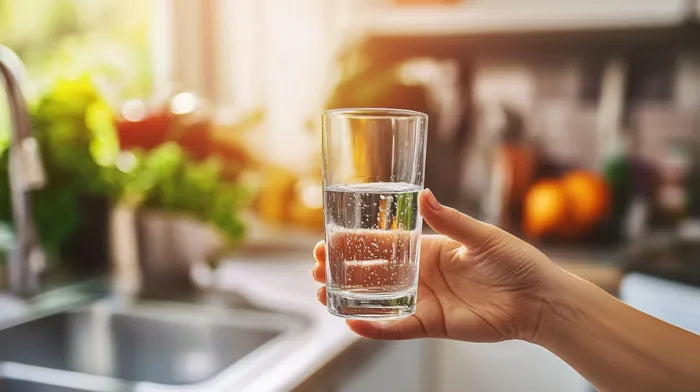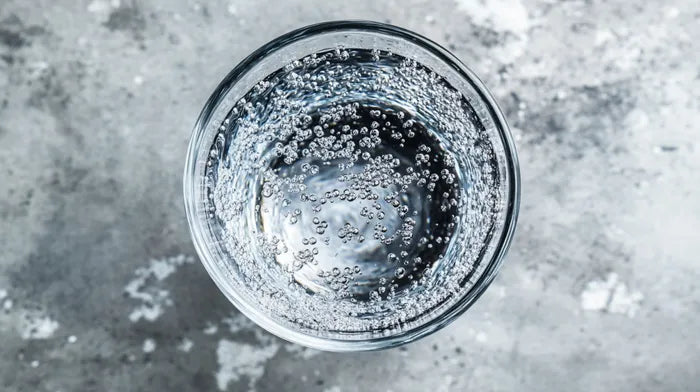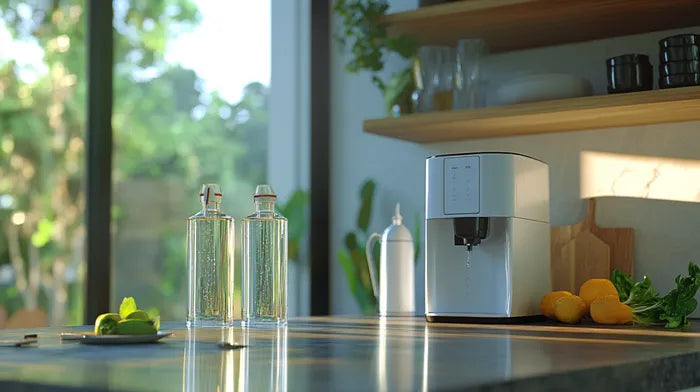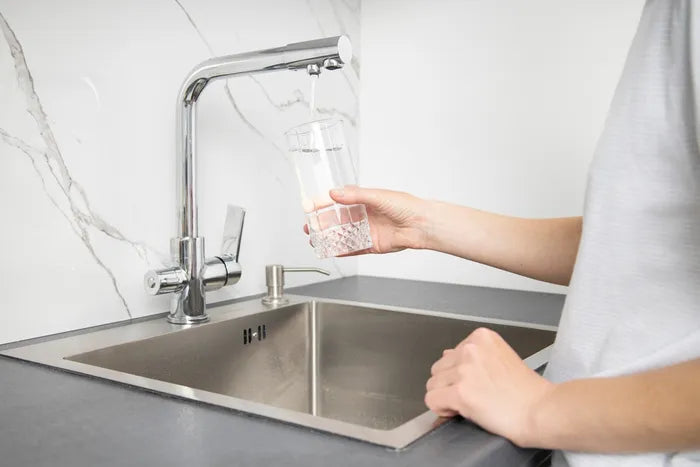Reverse Osmosis vs. Purified Water: Which Is Better?
Reverse osmosis removes more contaminants than any other method. But it also strips healthy minerals and wastes water. Compare it directly to carbon, UV, distillation, and other methods so you can choose the best option for your health and budget.
Updated June 12, 2025

You want clean water. But “purified” can mean a dozen different things—carbon filters, UV systems, even distillation. Reverse osmosis is often held up as the gold standard. Is it really better?
That’s the problem. Most people don’t know how these methods stack up. Some leave behind chemicals. Others strip out healthy minerals. And the one you choose affects not just taste, but long-term health.
This article breaks down how reverse osmosis compares to other popular purification methods. You’ll see what each one removes, what it leaves behind, and which works best depending on your needs.
Reverse Osmosis vs. Purified Water at a Glance
| Feature | Reverse Osmosis | Other Purified Methods (Carbon, UV, Distillation, etc.) |
|---|---|---|
| Best for | Medical-grade purity, heavy contamination | Improving taste, light filtration needs |
| Contaminants Removed | Broad range: heavy metals, bacteria, dissolved salts | Varies by method; usually more limited |
| Mineral Retention | Strips most minerals | Carbon/UV may retain essential minerals |
| Maintenance | Occasional membrane & filter replacement | Simpler upkeep for most alternatives |
| Cost | Moderate upfront, low long-term | Varies—UV is low, distillation is high |
| Speed | Fast, continuous supply | Slower in methods like distillation |
| Taste | Crisp, very neutral | More "natural" if minerals remain |
Reverse Osmosis Water
Reverse osmosis (RO) filter uses pressure to push water through a semi-permeable membrane. This membrane allows water molecules through but blocks everything else—salts, bacteria, metals, and more. It’s what hospitals use to make dialysis water safe for direct contact with blood.
In homes, RO is a popular pick for those who want clean-tasting water with virtually no risk of hidden contaminants. It’s especially effective in areas with poor tap water quality.
Pros
Removes a wide range of contaminants (heavy metals, pathogens, fluoride)
Excellent for high-risk areas or medical needs
- Produces clean, neutral-tasting water
Cons
Removes beneficial minerals too
- Requires a pressurized system and occasional upkeep
Purified Water
“Purified water” isn’t one thing. It’s a broad label for water treated through methods like:
- Carbon filtration (removes chlorine, VOCs, improves taste)
- UV treatment (kills bacteria and viruses)
- Distillation (boils water into steam, then recondenses)
- Deionization (removes ions using resins)
- Sediment filtration (removes visible particles)
Each has its place. Each has limits. For example, carbon filters improve taste but don’t remove metals. UV kills germs but leaves chemicals behind. Distillation purifies well but is slow and energy-intensive.
Pros
- Flexible options based on budget and needs
- Some methods retain healthy minerals
- Lower upfront cost in many cases
Cons
- No single method removes all types of contaminants
Maintenance needs vary—UV bulbs, filter changes, etc.
RO vs. Purified Water: Contaminant Removal
Reverse Osmosis
RO is unmatched when it comes to removing a wide spectrum of contaminants. It forces water through a semi-permeable membrane under pressure, trapping heavy metals like
- Lead
- Mercury
- Industrial chemicals
- Nitrates
- Fluoride
- Microplastics
- Bacteria
- Viruses
In fact, the Environmental Protection Agency recognizes RO as one of the most reliable technologies for eliminating a broad range of toxic compounds, including over 94% of PFAS chemicals like GenX and PFOA from drinking water sources [1].
Purified Water
Compared to RO, other purification methods are more selective. Activated carbon filters are great at removing chlorine, VOCs, and improving taste—but they don’t eliminate fluoride, dissolved salts, or microbes.
UV filters kill bacteria and viruses effectively, but they do nothing to remove metals or chemicals. Distillation does remove most contaminants but is slow and energy-intensive.
If your priority is safety across the board—especially for children, the immunocompromised, or anyone in a high-contamination zone—reverse osmosis wins.
Winner: Reverse osmosis
RO vs. Purified Water: Mineral Retention and Health
Reverse Osmosis
The very strength of reverse osmosis, its ability to remove nearly everything, can also be a drawback. It removes essential minerals like calcium, magnesium, and potassium, leaving water “demineralized.”
The World Health Organization has cautioned against drinking demineralized water long-term. It can increase urinary excretion of electrolytes, reduce hydration efficiency, and even contribute to bone health and cardiovascular issues if not corrected [2].
A simple, effective fix is to remineralize your RO water. The MAYU Hydrate & Replenish Kit combines essential minerals and electrolyte drops in one kit. It delivers 75 ionic and trace minerals—like calcium, magnesium, potassium, zinc—over zero calories or sugar.
Just a few drops in your filtered water restore healthy mineral balance, improve taste, and boost hydration. It’s a clean, convenient way to get the full benefits of reverse osmosis and the nutrients your body needs.
Purified Water
In contrast, purified water from methods like carbon filtration retains naturally occurring minerals such as calcium, magnesium, and potassium. These minerals also support nerve function, muscle contraction, bone strength, and hydration efficiency.
Unlike reverse osmosis, which requires post-treatment to restore these nutrients, mineral-preserving methods deliver water that’s ready to drink—helping maintain electrolyte balance and reducing the risk of deficiencies over time, all without any extra effort or equipment.
Winner: Purified water (Mineral-retaining methods like carbon)
RO vs. Purified Water: Taste and Hydration
Reverse Osmosis
Taste is subjective, but mineral content makes a noticeable difference. Reverse osmosis water is crisp but can taste flat or “empty” due to its lack of minerals. This can affect how well it quenches thirst.
Research suggests that demineralized water is less hydrating and may even affect your health [3]. Many users of RO systems end up installing remineralization cartridges or adding mineral drops to improve taste and pH.
Purified Water
Water purified by carbon filtration or UV often retains its natural balance of minerals and electrolytes, including magnesium, calcium, and potassium.
These minerals not only enhance mouthfeel but also give water a slightly “sweeter” or smoother taste that many people prefer over demineralized water. This mineral presence supports better hydration by improving water absorption at the cellular level and reducing diuresis.
Because no additional drops or cartridges are needed, it’s a low-effort option for those who want clean, good-tasting water with health benefits intact.
Winner: Purified water
RO vs. Purified Water: Cost, Maintenance, and Water Efficiency
Reverse Osmosis
Reverse osmosis systems are moderately priced to install and maintain. RO filter and membrane replacements are needed every 6–12 months, depending on usage.
But, RO systems typically waste water. Standard units may use 3–5 gallons of water for every 1 gallon of purified water produced, although newer systems are more efficient [4].
Purified Water
In contrast, carbon and UV filtration systems are cheaper upfront, require less frequent maintenance, and produce no wastewater.
They’re energy efficient too, especially compared to distillation, which requires heat and electricity to operate. While RO offers better contaminant control, carbon/UV systems are easier on the wallet and the environment if you’re in a low-risk water area.
Winner: Purified water
Speed and Convenience
Reverse Osmosis
Reverse osmosis systems can deliver a steady supply of purified water through a tank and faucet, producing up to 75 gallons per day in typical home units. That’s sufficient for drinking and cooking needs.
But, the process itself is slower than direct-flow filters and may not keep up with high-demand households unless properly sized.
Purified Water
Carbon and UV systems work instantly, filtering water as it flows, with no storage lag. Distillers, on the other hand, can take hours to process a few liters, making them impractical for everyday use.
If convenience and immediate access are your top priorities, both RO and carbon/UV systems can deliver—provided you size the RO unit correctly.
Winner: Tie (RO and Carbon/UV win on convenience; distillation falls short)
Our Verdict: Which Filtration Method is the Best?
If you need top-tier water purification, something that reliably removes nearly all contaminants, from microplastics to lead to PFAS, reverse osmosis is the clear winner.
RO is ideal for families in areas with known water issues, or anyone with medical concerns that demand consistently clean water. But, that power comes with trade-offs: stripped minerals, higher water waste, and a need for occasional maintenance.
If your water source is moderately clean and your goals are better taste, hydration, and ease of use, then a high-quality carbon or UV purification system may be the smarter fit. It’s cheaper, more sustainable, and keeps the good stuff (minerals) intact.
References:
- “Overview of drinking water treatment Technologies | US EPA,” US EPA, Mar. 28, 2025. Available: https://www.epa.gov/sdwa/overview-drinking-water-treatment-technologies
- Water, Sanitation, Hygiene and Health (WSH), “Nutrients in drinking-water,” Feb. 11, 2005. Available: https://www.who.int/publications/i/item/9241593989
- D. Sunardi et al., “Health effects of alkaline, oxygenated, and demineralized water compared to mineral water among healthy population: a systematic review,” Reviews on Environmental Health, vol. 39, no. 2, pp. 339–349, Dec. 2022, doi: 10.1515/reveh-2022-0057. Available: https://pubmed.ncbi.nlm.nih.gov/36571558/
- “Point-of-Use Reverse Osmosis Systems | US EPA,” US EPA, Jan. 14, 2025. Available: https://www.epa.gov/watersense/point-use-reverse-osmosis-systems
Disclaimer: The information published by MAYU Water is not a substitute for the expert knowledge, advice, and recommendations of trained professionals. We strongly recommend consulting with industry experts and primary or scientific sources before making any health, research-related, or other important decisions.
FAQs
What is the difference between reverse osmosis and PUR filter?
RO uses a semi-permeable membrane to remove a wide range of impurities, including dissolved solids, at a molecular level, whereas a PUR filter primarily uses activated carbon and ion exchange materials to trap contaminants and improve taste and odor.
How much does a whole-house reverse osmosis cost?
whole-house reverse osmosis system can cost anywhere from $1,000 to over $10,000, with most homeowners typically paying around $2,500. The price varies significantly depending on factors such as the system's capacity, filtration stages, brand, additional features (like a booster pump or UV light), and installation complexity.
What are the cons of drinking reverse osmosis water?
While RO effectively removes harmful contaminants, its primary cons for drinking include the removal of beneficial minerals like calcium and magnesium, which can lead to potential mineral deficiencies over time and a "flat" taste.
Additionally, RO water is typically slightly acidic, and the process generates a significant amount of wastewater.
Which is better tankless or tank reverse osmosis system?
Tankless RO systems save space, offer on-demand fresh water, and are more water-efficient, while tank RO systems are generally cheaper upfront and provide a stored supply of water, though they take up more space and can have issues with water stagnation.
How often should I drain my reverse osmosis tank?
It's recommended to completely drain your reverse osmosis storage tank at least once every two weeks, especially if you don't use much water, to ensure the water stays fresh and helps the RO membrane maintain proper pressure.
Annually, you should also sanitize the entire RO system, including the storage tank, which often coincides with filter replacement.












